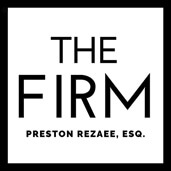Led by Preston Rezaee, Esq., The Firm is a premier personal injury law practice in Las Vegas, dedicated to delivering justice for accident victims. With a reputation for relentless advocacy and client-focused representation, The Firm ensures injured individuals receive the compensation they deserve.
Las Vegas is famous for its dazzling lights, high-stakes gaming, and unforgettable entertainment. But beyond the poker tables and pool parties, the city is also home to a range of thrill-seeking attractions, from towering roller coasters and bungee-style rides to zip lines and simulated skydiving experiences. While these adrenaline-pumping amusements draw in countless tourists and locals alike, they also come with a level of risk. When rides malfunction or are improperly operated, the consequences can be serious—even deadly.
This blog explores the complex issue of amusement ride liability in Las Vegas. We’ll examine what happens when thrill turns to trauma, who may be held responsible, and what injured victims need to know to protect their rights.
Types of Amusement Rides in Las Vegas
Las Vegas offers a broad range of thrill rides and attractions. These include:
- Roller Coasters: Like the Big Apple Coaster at New York-New York, which weaves through the hotel skyline at high speeds.
- Observation Wheels: Such as the High Roller at The LINQ, one of the tallest observation wheels in the world.
- Zip Lines: Including SlotZilla on Fremont Street and Fly LINQ.
- Simulated Experiences: Like indoor skydiving or VR thrill rides.
- Drop Towers, Spinning Rides, and Other Carnival-Style Attractions found on resort rooftops or inside themed entertainment venues.
These rides operate under a mixture of private ownership, third-party vendors, and partnerships with resort properties, making liability issues particularly complex.
Common Causes of Amusement Ride Injuries
1. Mechanical Failures
- Faulty seat belts, harnesses, or lap bars
- Malfunctioning brakes or motors
- Structural defects or ride component failure
2. Operator Error
- Inadequate training
- Failure to follow safety protocols
- Premature start or stop of ride
3. Negligent Maintenance
- Missed inspections
- Improper repairs
- Deferred upgrades or worn-out parts
4. Design Defects
- Poorly engineered rides that create unexpected G-forces or unsafe conditions even when operating normally
5. Failure to Warn or Enforce Safety Rules
- Inadequate signage or verbal instructions
- Lack of enforcement of height/weight restrictions
- 6. Environmental Hazards
- Slippery platforms
- Poor lighting
- Tripping hazards around ride entry/exit zones
Types of Injuries Common in Amusement Ride Accidents
• Whiplash and spinal injuries
• Concussions or traumatic brain injuries (TBIs)
• Lacerations and broken bones
• Dizziness, nausea, or fainting from G-forces
• Internal bleeding or blunt force trauma
• Fatal injuries in extreme cases
Understanding Liability: Who Can Be Held Responsible?
Liability in amusement ride accidents depends on the specific circumstances of the incident. Potentially liable parties may include:
- The Resort or Venue: If the ride is owned and operated by the hotel or resort, they may be directly liable for injuries resulting from negligence.
- Third-Party Ride Operators: Some rides are owned and operated by outside vendors. These companies may be responsible for training staff, maintaining equipment, and following safety protocols.
- Manufacturers: If a ride fails due to a design or manufacturing defect, the original manufacturer or designer may be liable.
- Maintenance Contractors: Outside contractors hired to inspect or maintain rides may be liable for failing to detect or correct hazards.
Premises Liability vs. Product Liability
In many cases, victims may file a premises liability claim if the injury resulted from unsafe property conditions. However, if the issue lies in the ride’s design or a defective component, a product liability claim may be more appropriate. An experienced attorney can help determine the right course of action based on the facts.
Waivers and Legal Challenges
Most amusement rides require participants to sign a waiver before riding. While waivers may limit liability, they do not provide blanket immunity.
• Waivers may not be enforceable if the injury results from gross negligence, willful misconduct, or a known hazard.
• Children under 18 cannot legally waive their right to sue, meaning their parents or guardians may still pursue claims.
• Ambiguities in waiver language may render them invalid or unenforceable in court.
Steps to Take After an Amusement Ride Injury
1. Seek Immediate Medical Attention
• Even if injuries seem minor, a medical evaluation can identify internal or delayed symptoms.
2. Report the Incident
• Notify venue staff or management and request an official incident report.
3. Document the Scene
• Take photographs or videos of the ride, equipment, and surrounding area.
• Collect names and contact info of witnesses.
4. Preserve Evidence
• Do not sign additional waivers or statements without legal counsel.
• Save any tickets, wristbands, or receipts associated with the attraction.
5. Consult an Experienced Personal Injury Attorney
• Legal counsel can help you assess liability, negotiate with insurers, and file a personal injury claim.
Damages You May Be Entitled To
Victims of amusement ride injuries may be entitled to compensation for:
• Medical expenses (past and future)
• Lost wages and reduced earning capacity
• Pain and suffering
• Emotional distress
• Permanent disability or disfigurement
• Wrongful death (in fatal cases)
Statute of Limitations in Nevada
In Nevada, personal injury victims generally have two years from the date of the injury to file a lawsuit. However, exceptions may apply, and evidence can degrade over time, so it’s crucial to act quickly.
Why Choose The Firm
Amusement ride injury claims can be incredibly complex, involving multiple liable parties, conflicting safety regulations, and disputes over waiver enforceability. At The Firm, we bring a deep understanding of Las Vegas law, extensive trial experience, and an unwavering commitment to advocating for accident victims.
If you or a loved one has been injured on a thrill ride in Las Vegas, contact us for a free consultation. We’ll help you navigate the legal maze and fight to secure the compensation you deserve.
The information provided in this article is for general informational purposes only and is not intended to constitute legal advice. The content is based on the author’s understanding of the subject matter at the time of writing and is not tailored to the specific circumstances of any individual or entity.
Nothing in this article should be construed as creating an attorney-client relationship or as a substitute for seeking legal advice from a licensed attorney. Legal matters can be complex and vary greatly depending on the jurisdiction and the specifics of the case. Therefore, we strongly encourage readers to consult with qualified legal counsel for advice regarding their individual circumstances.
The author and publisher of this article assume no responsibility for any errors or omissions in the content or for any actions taken based on the information provided herein. The reader assumes full responsibility for any use or reliance on the information contained in this article.
By using this article, the reader agrees that they will not hold the author or publisher liable for any outcomes resulting from their use of the information presented.
For specific legal advice, readers are urged to contact a licensed attorney in their jurisdiction.

